Your safety is important to us. Please read more about our Stay Safe program.
Neighborhood Information
Short-Term Furnished Apartments in San Francisco, CA
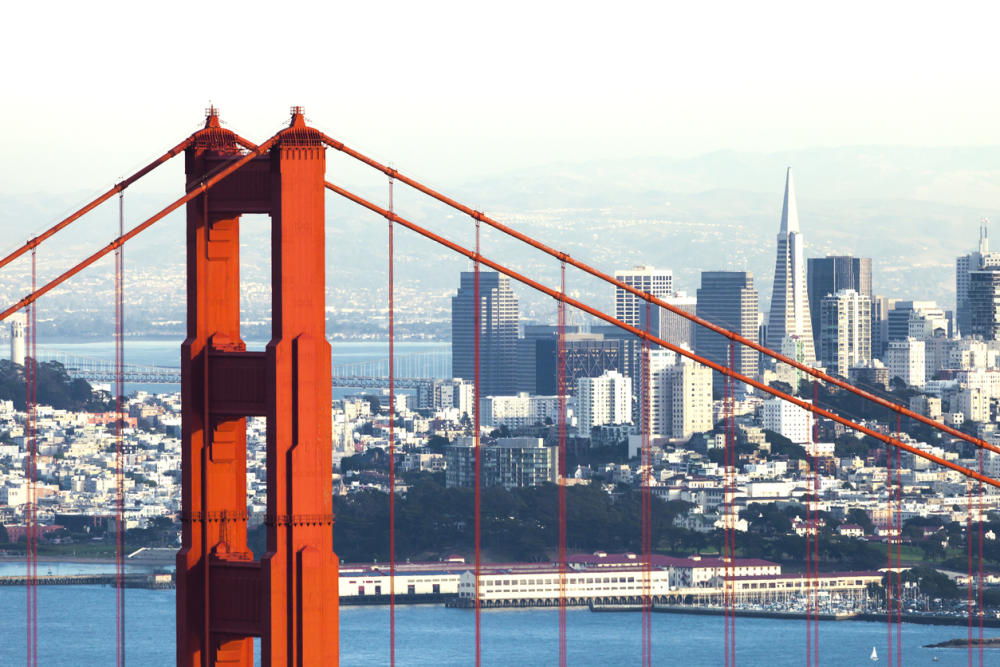
Known for its cable cars, foggy weather, hilly streets and colorful history, San Francisco is the cultural and
commercial center of Northern California. As a significant innovation hub, the City by the Bay is also home to major tech
companies such as Salesforce, Twitter, Dropbox, Yelp, Uber and Lyft. From giant burritos in the Mission District to LGBT bars
in the Castro to museums in SoMa, San Francisco offers something for everyone. Beloved
symbols and attractions
include the Golden Gate Bridge, Bay Bridge, Alcatraz Island, Coit Tower, Chinatown and Lombard Street.
City Overview
Total area: 46.87 sq mi
Population: 881,549
Population ranking: 4th in California, 13th in United States
Population density: 17,179/sq mi
Median household income: $104,552
U.S. Census Bureau QuickFacts
Transportation
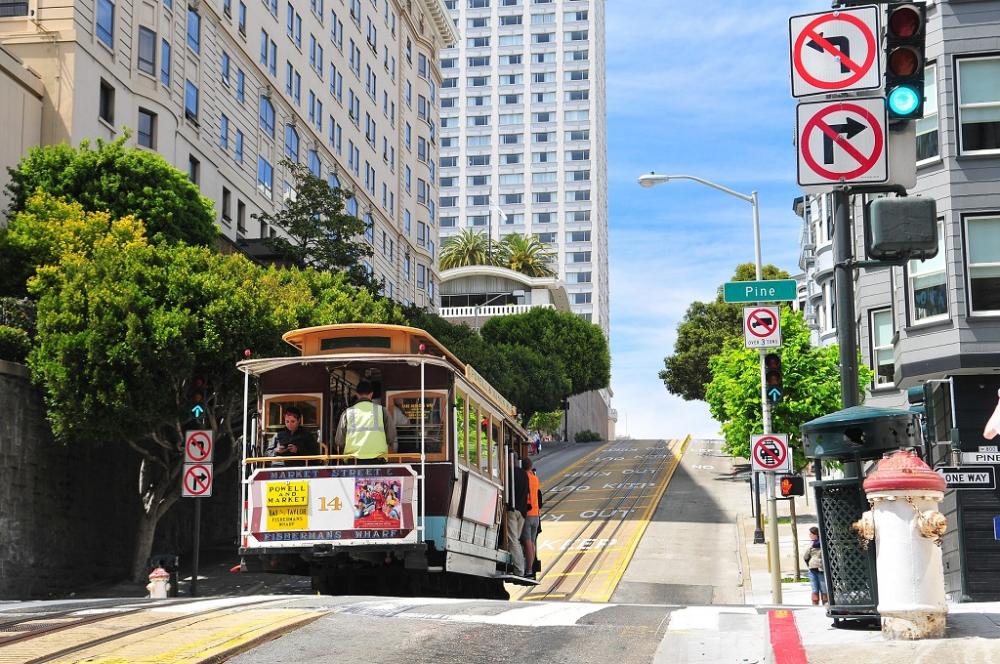
San Francisco maintains an extensive public transit network of buses, light rail and even historic streetcars and cable cars
that still operate today. Ridesharing is also popular, as well as biking and even rentable scooters. However, driving remains
the preferred way for most residents to get around.
Here’s an overview of San Francisco’s main forms of public transportation.
Muni
“Muni,” short for the San Francisco Municipal Railway, is the city’s official public transit system. Muni operates buses, light
rail, heritage streetcars and cable cars. Fares as of 2019 are $2.75 for adults; you can save 25 cents per ride by purchasing your
fare before boarding using the MuniMobile app or getting a Clipper Card.
The Muni bus system contains 54 bus lines and 17 trolley bus (powered by overhead electric wires) lines, which will
take you nearly anywhere in the city.
Muni Metro is a light rail system consisting of six lines: J, K, L, M, N and T, all beginning on Market Street.
There is also an S Shuttle line with limited operation. Muni Metro reaches almost any corner of the city and connects with other
local transit systems.
Heritage streetcars, made up of the E Embarcadero and F Market & Wharves lines, are a tourist attraction but also
serve local commuters. These vintage cars use historic equipment and provide a window into old San Francisco while remaining an integral
part of the Muni network. Both lines run the length of the Embarcadero; the E line terminates in Mission Bay and the F line terminates
in the Castro District.
Cable cars are a recognizable symbol of the city and similarly attract many tourists. They also make up the world’s
last manually operated cable car system. Only three lines remain in use today: the PH and PM, connecting downtown to Fisherman’s
Wharf, and the C, running along California Street.
For more on San Francisco’s public and private transportation options, see our blog on
Getting Around San Francisco
.
Neighborhoods
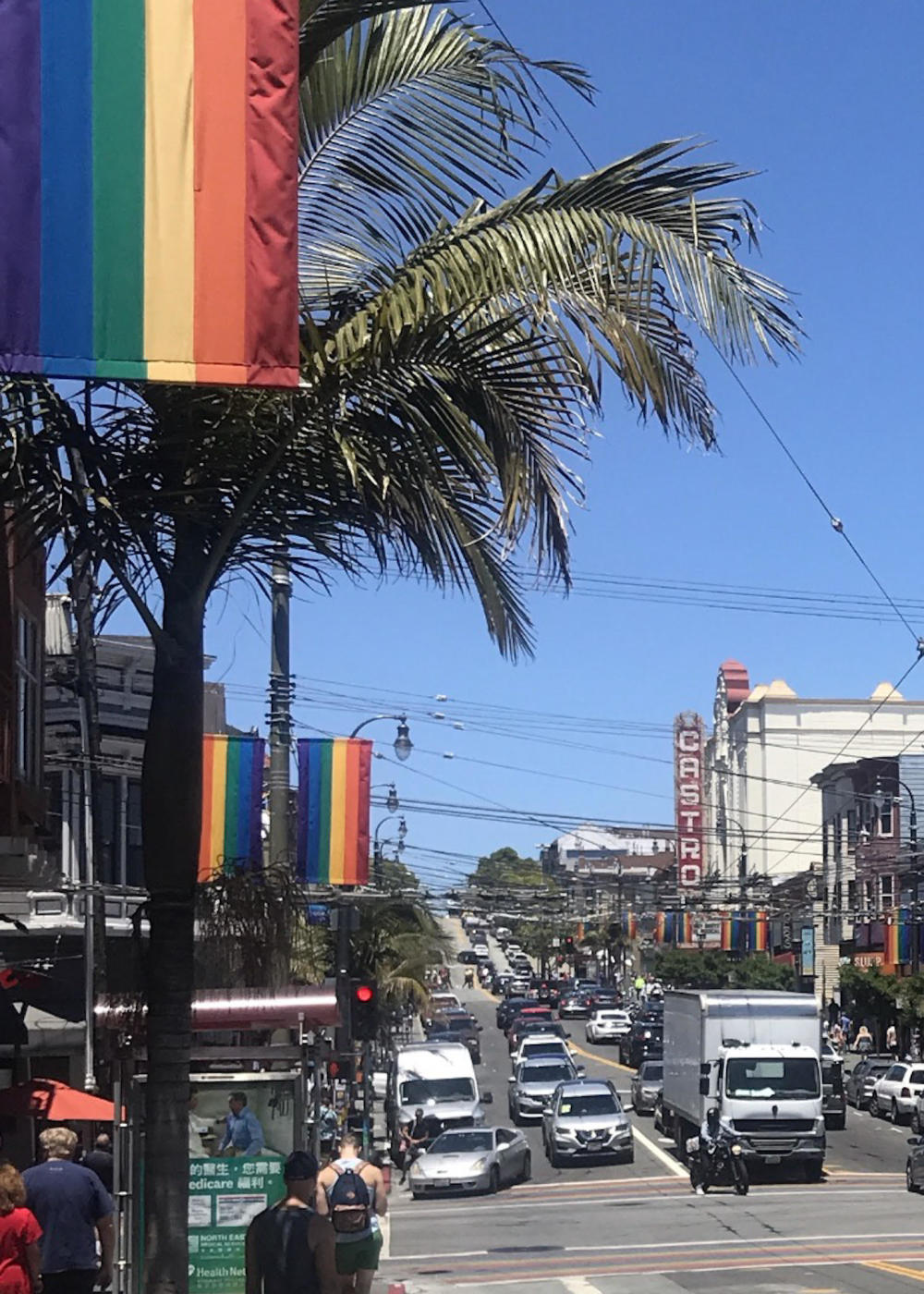
Within its humble 46.87 square miles, San Francisco has over 100 neighborhoods and micro-neighborhoods, the boundaries of which
are ever-changing and the subject of debate. Much like in other cities, these neighborhoods each have their own unique flavor,
and which one you choose to live in is a statement. Here are a few major neighborhoods that are important to know.
- Chinatown – The oldest Chinatown in North America and the largest Chinese enclave outside Asia.
- Financial District – San Francisco’s main central business district. Home of all six of the city’s Fortune 500 companies and the skyline’s tallest buildings: the Transamerica Pyramid and the Salesforce Tower.
- Civic Center – Contains many major government and cultural institutions, including City Hall, the Supreme Court of California, the Asian Art Museum, the San Francisco Ballet, Opera and Symphony and the San Francisco Public Library.
- South of Market(SoMa) – One of San Francisco’s most modern and fashionable neighborhoods containing a mix of warehouses, museums, restaurants, nightlife, luxury apartments and high-rise tech office buildings.
- Nob Hill – One of the highest-incoming neighborhoods in the United States and home to many high-end hotels, historic mansions and Michelin-starred restaurants.
- Tenderloin – One of the city’s poorest neighborhoods, located in the downtown area surrounded by much wealthier ones. Has a reputation for homelessness, drug use and other street crimes, leading people to avoid it.
- Haight-Ashbury – The city’s grooviest neighborhood, also called the Haight. It’s named for the intersection of Haight and Ashbury streets, the birthplace of the mid-1960s hippie counterculture movement.
- Mission – San Francisco’s main Latino neighborhood, known for its colorful murals and taquerías.
- Castro – A local and worldwide epicenter of LGBTQ activism and culture.
- Twin Peaks – Located in the geographic center of San Francisco and encompassing its two highest hills. Great for views of the entire city and Bay plus quiet seclusion from the rest of the city.
For more, read our
Guide to San Francisco’s Major Neighborhoods.
Art and Culture
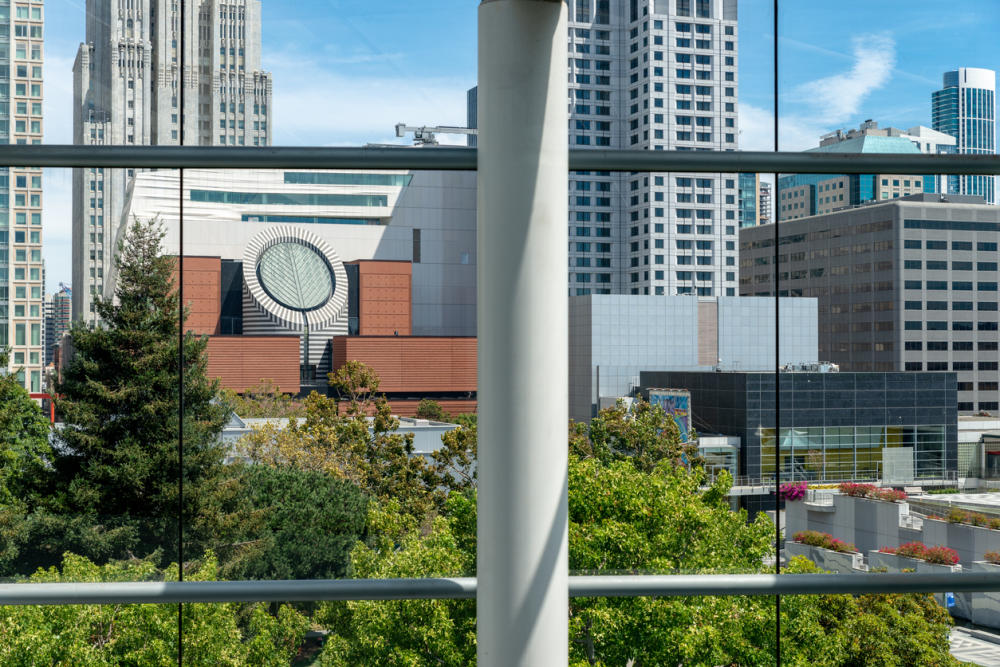
San Francisco has long been a haven for artists, bohemians, subcultures and countercultural movements, most notably in the 1960s when
the “hippie” movement broke out in the Haight-Ashbury district. Today, there are over 50 museums and cultural institutions in San
Francisco encompassing fine art, science, history and much more. Walking around certain neighborhoods like the Haight, the Mission
or SoMa can also be an artistic experience by viewing their murals, street art, architecture and sculpture.
Popular and well-known museums and institutions include:
- Asian Art Museum of San Francisco
- California Academy of Sciences
- Contemporary Jewish Museum
- de Young Museum
- Exploratorium
- GLBT History Museum
- Legion of Honor
- Mission Dolores
- San Francisco Museum of Modern Art
- San Francisco War Memorial and Performing Arts Center
- SF JAZZ Center
- Walt Disney Family Museum
- Yerba Buena Center for the Arts
Dining
The dining scene in San Francisco centers around fresh California ingredients, local seafood, ethnic cuisines and health-conscious
options. Signature foods and dishes include sourdough bread, Cioppino, Dungeness crab, bay shrimp, clam chowder and burritos.
The city has over 4,000 restaurants, from fast casual to Michelin-starred establishments. San Francisco’s Chinatown brought
mainstream appeal to Americanized Chinese cuisine as we know it, and to this day is a popular destination for Chinese food and
dim sum restaurants. The Mission, a Latino neighborhood, is known for its many taquerias and for inventing the Mission burrito,
a large burrito stuffed with rice, beans, meat, salsa, cheese, sour cream, guacamole and lettuce. Renowned restaurants include the
House of Prime Rib, Original Joe’s, In-N-Out Burger, La Taqueria, Delfina, Swan Oyster Depot, The Slanted Door, Sam Wo and Red’s Java
House.
Parks and Recreation
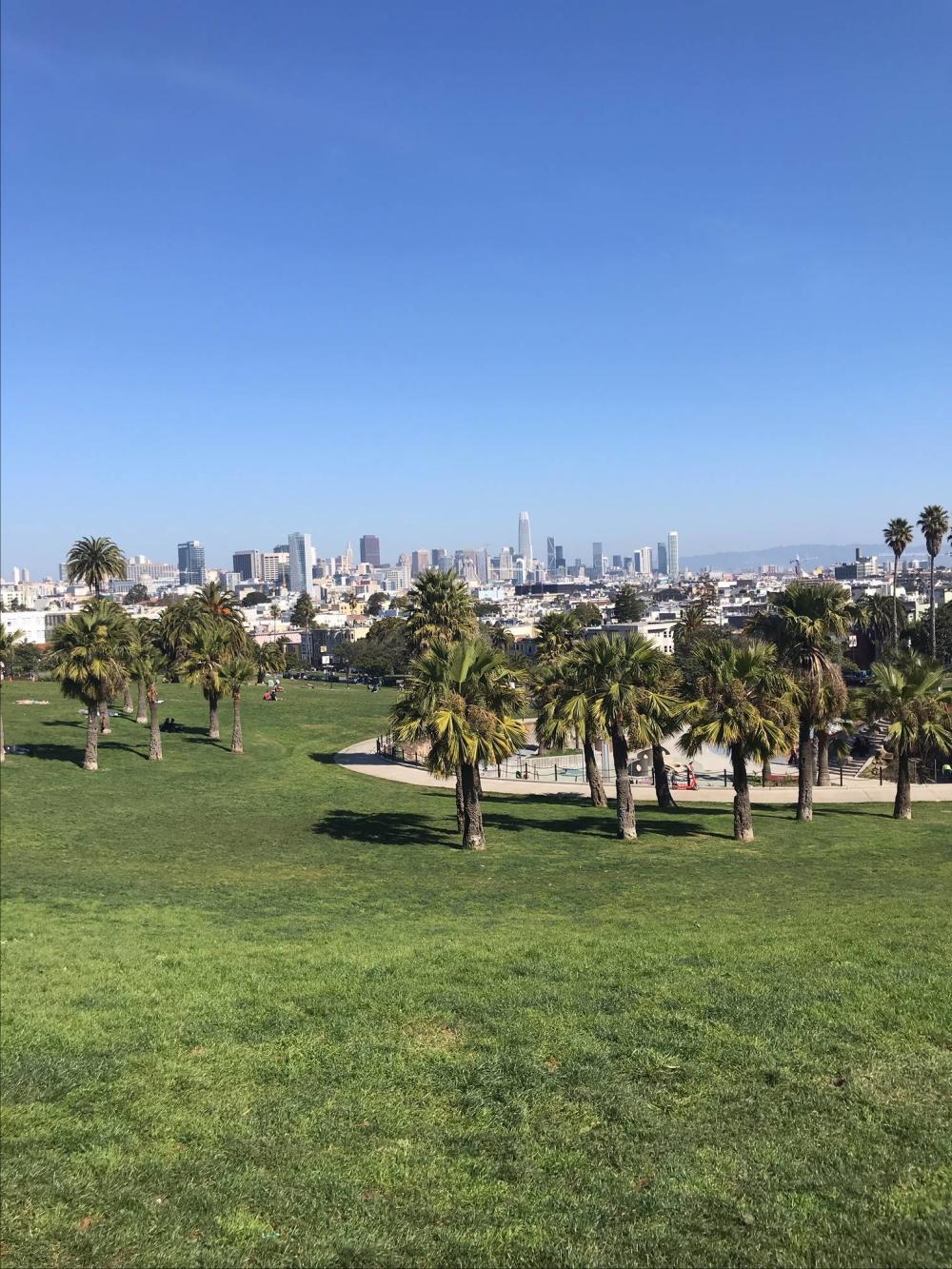
San Francisco’s largest park, Golden Gate Park, is situated in the northwestern part of the city. Spacious and rectangular in
shape, it’s often compared to Manhattan’s Central Park but is actually 20% larger in size. Its 1,000+ acres of space are filled with
green grass, Eucalyptus, pine and cypress trees, lakes, hills, exotic plants and even wild animals. The park contains several points
of interest within its boundaries, including the de Young Museum, Academy of Sciences, Japanese Tea Garden, Conservatory of Flowers,
San Francisco Botanical Garden at Strybing Arboretum, Bison Paddock, Hippie Hill, National AIDS Memorial Grove, Shakespeare Garden
and Rose Garden.
You may recognize Alamo Square Park for its prime views of downtown San Francisco and a colorful row of old Victorian houses nicknamed
the Painted Ladies. The hilltop park is a popular spot for photographing the Painted Ladies with the city skyline in the background,
as well as for picnicking, sunbathing and playing Frisbee.
Mission Dolores Park, abbreviated by locals to Dolores Park, is another popular park for great views, recreation and relaxation.
Located on the western edge of the Mission District, the park boasts views of the entire city. It also experiences more sun and
less fog than other parts of the city, making it one of the best spots in the city for sunbathing and enjoying a nice day.
Our Furnished Apartments in San Francisco
340 Fremont
340 Fremont Street, San Francisco, CA 94105
Studios | 1 Beds | 2 Beds
![]()
![]()
![]()
![]()
![]()
![]()
![]()
![]()
![]()
Avery 450
450 Folsom Street, San Francisco, CA 94105
1 Beds
![]()
![]()
![]()
![]()
![]()
![]()
![]()
![]()
![]()
![]()
NEMA 18
18 Tenth Street, San Francisco, CA 94103
1 Beds
![]()
![]()
![]()
![]()
![]()
![]()
NEMA 8
8 Tenth Street, San Francisco, CA 94103
1 Beds
![]()
![]()
![]()
![]()
![]()
![]()
![]()
![]()
The Paramount
680 Mission Street, San Francisco, CA 94105
1 Beds
![]()
![]()
![]()
![]()
![]()
![]()
![]()
![]()
![]()


